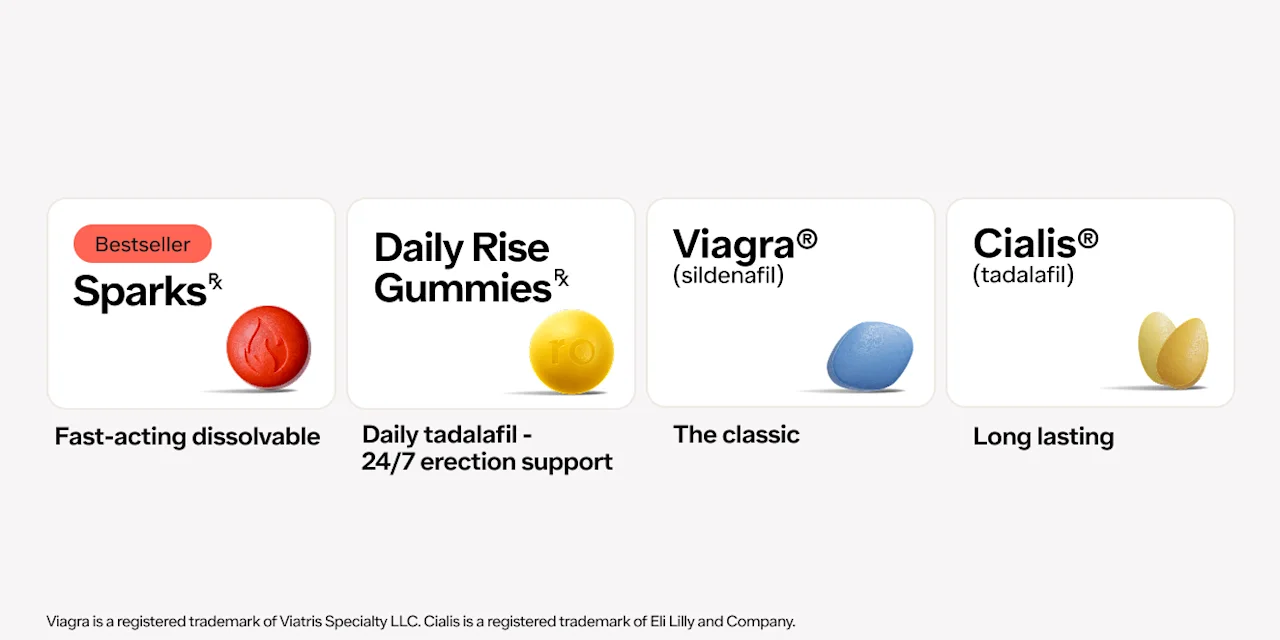Key takeaways
Trimix is a compounded medication containing three ingredients that are supposed to help treat erectile dysfunction (ED).
Alprostadil is a common ingredient in Trimix injections that’s also available as an FDA-approved ED treatment on its own.
Trimix injections are prescribed off-label for the treatment of ED because they’re usually only available at compounding pharmacies.
Here's what we'll cover
Here's what we'll cover
Key takeaways
Trimix is a compounded medication containing three ingredients that are supposed to help treat erectile dysfunction (ED).
Alprostadil is a common ingredient in Trimix injections that’s also available as an FDA-approved ED treatment on its own.
Trimix injections are prescribed off-label for the treatment of ED because they’re usually only available at compounding pharmacies.
While oral medications, such as Viagra (sildenafil) and Cialis (tadalafil), are often the first-line of treatment for erectile dysfunction (ED), they might not be a fit or effective for everyone. In some instances, your healthcare provider might recommend injectables, which can include Trimix injections.
But Trimix isn’t just your run-of-the-mill medication. Rather, it’s a combination of different pharmaceutical ingredients, and it isn’t available at any average pharmacy. Ahead, we break down everything you need to know about Trimix injections, including how they work, how much they cost, and how they compare to more traditional ED treatments.
What are Trimix injections?
Trimix is a type of injectable medication that’s often prescribed off-label to treat ED. It contains a combination of three active ingredients: alprostadil, papaverine, and phentolamine—all which work together to hopefully help you get erect.
Alprostadil (brand names Caverject and Edex) is a type of vasodilator that can help relax the blood vessels in the shaft of your penis. On its own, alprostadil is approved by the US Food and Drug Administration (FDA) for ED treatment. Then there’s papaverine, which is another vasodilator that can act as a smooth muscle relaxer to treat ED, and phentolamine, which can cause the blood vessels to expand to increase blood flow to your penis.
The FDA still needs to evaluate the safety and effectiveness of Trimix injections, so they are only available through compounding pharmacies, which specialize in custom-made medications.
If the idea of injecting your member makes you, say, queasy, nervous, or all around uncomfortable, there is some good news: Trimix and alprostadil are also available as a topical cream or gel. Now, for the folks who don’t mind learning about sticking needles in your penis, let’s keep going…
How do Trimix injections work?
Trimix injections work by relaxing, expanding, and filling the blood vessels in your penis to cause an erection. The medication is typically dispensed in a vial and administered with a syringe before getting intimate.
Once you retrieve the prescribed dose from the vial, you’ll likely inject the liquid into the side of your penis (alternating sides with each injection), remove the needle, and apply pressure to the injection site for a few minutes to reduce bleeding. Within 5–20 minutes, you should get an erection that should peak around 30 minutes and dissipate in about 60.
Your healthcare provider will probably administer the first dose in their office to ensure you know how to use it and react properly to the medication. From there, they may increase the dose until the desired effects are achieved. Similar to other ED treatments, Trimix injections are used as-needed for sexual activity, but they should not be used more than three times a week. You should also wait at least 24 hours between uses.
It’s important to note that all of these details are based on the prescribing information for Caverject (the brand-name version of alprostadil). That’s because there isn’t any agreed-upon instruction, evidence-based studies, or clinical information for Trimix injections, as they’re not yet approved as a combination treatment by the FDA. So, please take the above with a grain of salt. And if you do end up getting prescribed Trimix injections, consult your healthcare provider for exact injection instructions and information.
Are Trimix injections effective?
TBD. Because Trimix contains a mixture of ingredients, it’s considered a compounded medication. Meaning, it’s a custom-made pharmaceutical product that’s created by licensed pharmacists to meet the unique needs of an individual patient when a commercially available drug cannot, according to the American Pharmacists Association.
Although compounded drugs can be prescribed under federal law, they are not FDA-approved and, thus, do not go through the same safety, efficacy, and manufacturer reviews as drugs that receive approval (e.g. alprostadil). So, there’s very little research on whether or not Trimix injections are effective. That being said, some studies do suggest that Trimix injections can provide similar frequency and quality of erections as the alprostadil. And remember: Alprostadil is FDA-approved. This means that it’s passed clinical trials that show it’s safe and effective for treating ED.
Trimix side effects
When it comes to the side effects of Trimix injections, we have to refer to the side effects of alprostadil, which include:
Hypotension and hypertension (low and high blood pressure)
Dizziness
Headache
Rash on the penis
Penis infections
Injuries to the penis
Priapism (a prolonged erection)
Another potential side effect of alprostadil injection is penile fibrosis, which is tissue scarring on the surface of the penis. It occurs due to long-term injury to the penis, such as recurring injections. Over time, penile fibrosis can lead to Peyronie’s disease, which causes the penis to curve.
Since Trimix injections are self-administered, there’s the potential for user error. It’s important to know the proper methods and locations for giving yourself injections. If you’re having difficulty self-injecting Trimix medication, speak with your urologist or another healthcare provider, who can show you how to safely insert and remove the needle from your penis.
How much do Trimix injections cost?
Trimix injection prices vary depending on your coverage, if any. Many insurance plans do not cover compounded medications. Compounded drugs, such as Trimix, tend to be more expensive than regular medications, and their prices can vary by compounding pharmacy. No exact price range is available for Trimix injections.
How does Trimix compare to other ED medications?
At this point, you might be wondering how Trimix injections stack up to some of the other ED treatments out there, especially since there are plenty of options that have been FDA-approved and, thus far, shown to be largely effective and safe. While it’s best to weigh the pros and cons of any medication with your healthcare provider before giving it a go, here’s a general look at how Trimix injections compare to oral pills and other injectables for ED.
Trimix vs. oral ED medications
As mentioned above, healthcare providers often prescribe oral medications, such as Viagra and Cialis, as the first line of treatment for ED. These drugs are known as phosphodiesterase type 5 (PDE5) inhibitors; to simplify the way they work, they keep the blood vessels in the penis open, which allows more blood to flow in and, in turn, promotes harder, longer-lasting erections.
In order for PDE5 inhibitors to cause these effects, however, you first need to be sexually aroused—which isn’t the case for Trimix injections, as they can cause an erection on their own. And while the exact time differs slightly depending on the specific drug, it can take anywhere from 15–60 minutes post-consumption for PDE5 inhibitors to kick in when taken on an as-needed basis. (Certain medications, such as Cialis and Ro’s Daily Rise Gummies (which contains 7 mg of tadalafil), can be taken at a low dose daily; therefore, they’re always circulating in your body, ready to get to work.) Trimix, on the other hand, typically can get to work within 5–20 minutes.
Also unlike Trimix, PDE5 inhibitors are FDA-approved, indicating they’ve gone through rigorous testing and are deemed to be safe and effective in treating ED. This also means that prescriptions for PDE5 inhibitors can often be filled at your local pharmacy. The prices of these medications vary depending on several factors: insurance, dosage, type of medication (i.e.generic vs. brand name), and where you purchase the meds.
According to GoodRx, a 30-pill supply of 100 mg of Viagra can range from nearly $2,600 to a little over $2,900 without insurance; this breaks down to about $80–$100 per dose. Comparatively, Ro offers 100 mg of brand-name Viagra via telehealth for $90 per dose and the generic version (sildenafil) for $4 per 25 mg, $6 per 50 mg, and $10 per 100 mg.
Common PDE5 inhibitors include:
Trimix vs. injectable ED medications
In case you missed it (several times) above, Trimix injections are not FDA-approved. There are, however, injections for ED that do have the agency’s approval, such as Caverject and Edex—both of which contain alprostadil as the active ingredient. (Reminder: Alprostadil is one of the ingredients in Trimix.)
Like Trimix, these injections also trigger a spontaneous erection without the need for sexual stimulation typically 5–20 minutes post-injection. Caverject, for example, also comes as a vial, though it only contains one dose and needs to be mixed with a solution prior to using. While it is FDA-approved, Caverject isn’t necessarily covered by insurance; in fact, most insurance companies do not cover ED injections. The out-of-pocket price of one vial (i.e. one dose) of 40 mcg of Caverject can range from around $140 to a little over $161, according to GoodRx.
DISCLAIMER
If you have any medical questions or concerns, please talk to your healthcare provider. The articles on Health Guide are underpinned by peer-reviewed research and information drawn from medical societies and governmental agencies. However, they are not a substitute for professional medical advice, diagnosis, or treatment.
Viagra Important Safety Information: Read more about serious warnings and safety info.
Cialis Important Safety Information: Read more about serious warnings and safety info.
American Pharmacists Association. (2021). Frequently Asked Questions About Pharmaceutical Compounding. Retrieved from https://www.pharmacist.com/Practice/Patient-Care-Services/Compounding/Compounding-FAQs
Centers for Medicare & Medicaid Services (CMS). (n.d.). Self-Administered Drug Exclusion List: and Biologicals Excluded from Coverage - Medical Policy Article (A52527). Retrieved from https://www.cms.gov/medicare-coverage-database/view/article.aspx?articleid=52527&ver=60&bc=CAAAAAAAAAAA
Cho, M. C., Song, W. H., & Paick, J. (2018). Suppression of cavernosal fibrosis in a rat model. Sexual Medicine Reviews, 6(4), 572–582. https://doi.org/10.1016/j.sxmr.2018.02.007. Retrieved from https://www.sciencedirect.com/science/article/abs/pii/S2050052118300258
Costa, C. & Albersen, M. (2014). Erectile Dysfunction in Inflammaging. Inflammation, Advancing Age and Nutrition, 287-295. Retrieved from https://www.sciencedirect.com/science/article/abs/pii/B9780123978035000241
GoodRx–a. (n.d.). Caverject. Retrieved from https://www.goodrx.com/caverject?label_override=caverject&form=vial&dosage=40mcg&quantity=1
GoodRx–b. (n.d). Viagra. Retrieved from https://www.goodrx.com/viagra?label_override=viagra&form=tablet&dosage=100mg&quantity=30
Jackson, L. M., Parker, R. M., & Mattison, D. R. (2020). The Clinical Utility of Compounded Bioidentical Hormone Therapy: A Review of Safety, Effectiveness, and Use. StatPearls. Retrieved on Jun. 11, 2022 from https://www.ncbi.nlm.nih.gov/books/NBK562881/
Jain, A. & Iqbal, O. A. (2023). Alprostadil. StatPearls. Retrieved on Jun. 11, 2024 from https://www.ncbi.nlm.nih.gov/books/NBK542217/
Krzastek, S. C., Bopp, J., Smith, R. P., & Kovac, J. R. (2019). Recent advances in the understanding and management of erectile dysfunction. F1000Research, 8, F1000 Faculty Rev-102. https://doi.org/10.12688/f1000research.16576.1. Retrieved from https://www.ncbi.nlm.nih.gov/pmc/articles/PMC6348436/
Leslie, S. W. & Sooriyamoorthy, T. (2024). Erectile Dysfunction. StatPearls. Retrieved on Jun. 11, 2022 from https://www.ncbi.nlm.nih.gov/books/NBK562253/#article-91330
Lin, T. K., Shoair, O. A., Tran, D., et al. (2019). Utilization, Cost, and Pricing Scheme of Compounded Medications for Public Health System Patients: The California Workers’ Compensation System, 2011-2013. Journal of Managed Care - Specialty Pharmacy, 25(7). doi:10.18553/jmcp.2019.25.7.743. Retrieved from https://www.ncbi.nlm.nih.gov/pmc/articles/PMC10397593/
MedlinePlus. (2023). Alprostadil Urogenital. Retrieved from https://medlineplus.gov/druginfo/meds/a695022.html
Muacevic, A. & Adler, J.R. (2023). Successful Management of Prolonged Acute Ischemic Priapism With Penoscrotal Decompression: A Case Report and Review of Literature. Cureus, 15(3), e36757. doi:10.7759/cureus.36757. Retrieved from https://www.ncbi.nlm.nih.gov/pmc/articles/PMC10132700/
Padda, I. S. & Tripp, J. (2023). Phosphodiesterase Inhibitors. StatPearls. Retrieved from https://www.ncbi.nlm.nih.gov/books/NBK559276/
Parker, A., Bruha, M., Akinola, O., et al. (2016). A summary of the controversy surrounding off-label medications in men’s health. Translational Andrology and Urology, 5(2), 201–206. doi:10.21037/tau.2016.03.07. Retrieved from https://www.ncbi.nlm.nih.gov/pmc/articles/PMC4837311/
PubChem. (n.d.). Papaverine. Retrieved from https://pubchem.ncbi.nlm.nih.gov/compound/Papaverine
Sandean, D. P. & Lotfollahzadeh, S. (2023). Peyronie Disease. StatPearls. Retrieved from https://www.ncbi.nlm.nih.gov/books/NBK560628/
U.S. Food and Drug Administration (FDA). (n.d.) CAVERJECT (alprostadil) for injection, for intracavernosal use. Retrieved from https://www.accessdata.fda.gov/drugsatfda_docs/label/2017/020379s032lbl.pdf
U.S. Food and Drug Administration (FDA-a). (2022). Compounding and the FDA: Questions and Answers. Retrieved from https://www.fda.gov/drugs/human-drug-compounding/compounding-and-fda-questions-and-answers
U.S. Food and Drug Administration (FDA-b). (2022). MOUNJARO (tirzepatide) injection, for subcutaneous use. Access Data. Retrieved on May 3, 2023 from https://www.accessdata.fda.gov/drugsatfda_docs/label/2022/215866s000lbl.pdf
U.S. Food and Drug Administration (FDA). (2024). SILDENAFIL - sildenafil tablet, film coated. Retrieved from https://www.accessdata.fda.gov/spl/data/8c4f22c8-3607-4d64-8821-dd3202f8fa0a/8c4f22c8-3607-4d64-8821-dd3202f8fa0a.xml












